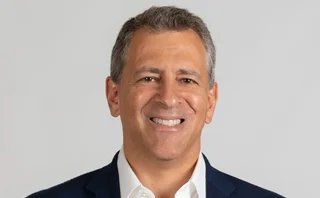

Increasing automation is a top priority for CTRM software users
Achieving higher levels of automation within the CTRM landscape is a top priority this year at commodities firms, survey finds
As commodity firms continue to digitalise their businesses, more and more processes are becoming automated. When it comes to commodity trading and risk management (CTRM) software systems, increasing automation is a number one priority this year, according to Energy Risk’s annual software survey.
Almost 64% of respondents said they planned to make changes to their CTRM system landscape in 2022, whether it be small tweaks or major overhauls and swapping vendors. Some 70% of those making changes said their organisation planned to increase automation. Enhancing analytics and improving data collection were the second and third most popular choices (see figure 1.)
The survey, which was carried out between December 14, 2021 and February 14, 2022, polled 584 users of commodities software at energy firms, trading houses and consultancies about their experiences with commodities software, their IT challenges and agendas this year. The specialist poll has been running alongside the Energy Risk Software Rankings since 2005, providing 17 years of data charting the use of software by the risk and trading functions of commodity firms. Its findings highlight many underlying trends and show the spread of new technologies and the digitalisation of the sector.
When asked what their organisation is ultimately trying to achieve through making changes to the CTRM software landscape, 75% of respondents said it was to increase operational efficiencies, which ties in with automation being a priority. Interestingly, the desire to increase operational efficiency came in even higher than wanting to achieve increased risk management capabilities. This was the second most popular choice, voted for by 69% of respondents (see figure 2.)
In terms of technology budgets, 39% said their budget would be larger this year than last, with 48% saying it would be the same and just 13% expecting a smaller pot in 2022 than 2021.
The major factor driving firms to make changes – voted for by 51% of respondents – was given as growth of the company, perhaps reflecting the impact that the current commodities price boom is having on small to mid-sized companies. Increased market complexity was the second most popular reason, garnering almost 45% of responses (see figure 3.)
The top three projects most likely to be requested by the risk team this year were expected to be data collection, moving the CTRM system to the cloud and predictive analytics (see table A.) As markets become more complex, the struggle to obtain good data remains very much at the forefront, but these results reflect the fact that more and more firms are forging forward with data analytics, employing data scientists and using data for its predictive capabilities.
The broad trend of moving CTRM systems to the cloud – something that has shown up clearly in this survey in recent years – continued this year. Some 44% of respondents said their CTRM system is now fully in the cloud (up from 42% last year) while 21% said they have some functionality in the cloud and 35% said they don’t have any cloud-based applications. This compares with 42% last year (see table B.)
Challenges
Like last year, the biggest IT challenge for energy risk managers and traders – voted for by 53% of respondents – was “understanding what new technologies are available and applicable”. Having to work tactically rather than strategically came in as the second biggest IT challenge, with 49% of the vote, while understanding what competitors were doing was third, with 29%. Just under 12% of respondents said their biggest challenge was getting time with the chief information officer (see figure 4.)
The survey asked respondents to say which areas within trading and risk, or required by trading and risk, they see as being most beset by problematic IT issues (see figure 5.) System integration came top of the list with 65% of respondents voting for it. This was followed closely by data cleaning and developing analytics, both voted for by 57% of respondents.
Looking at IT issues that negatively affect trading and risk management functions, the largest number of respondents (45%) listed their biggest hindrance as being vendors not fully understanding firms’ requirements. This was followed by poor customer service and support from vendors, which 42% of respondents listed. Some 37% of respondents indicated it was a hindrance having multiple relationships with software vendors, while 23% bemoaned contract or licensing issues.
Over half (53%) of respondents reported being “fairly satisfied” with their current CTRM system, with 28% being “very satisfied”. A further 13% said they were “fairly unsatisfied” with just 6% reporting being “very dissatisfied”.
Among complaints about their current CTRM software systems, the biggest, with 39% of respondents voting for it, was lack of flexibility to add or remove functionality (see figure 6.) Some 35% of respondents complained of restricted coverage or a lack of functionality, with a further 35% reporting poor or slow performance. Around 18% saw their system as being poor value for money.
Only users who have a paid subscription or are part of a corporate subscription are able to print or copy content.
To access these options, along with all other subscription benefits, please contact info@risk.net or view our subscription options here: http://subscriptions.risk.net/subscribe
You are currently unable to print this content. Please contact info@risk.net to find out more.
You are currently unable to copy this content. Please contact info@risk.net to find out more.
Copyright Infopro Digital Limited. All rights reserved.
As outlined in our terms and conditions, https://www.infopro-digital.com/terms-and-conditions/subscriptions/ (point 2.4), printing is limited to a single copy.
If you would like to purchase additional rights please email info@risk.net
Copyright Infopro Digital Limited. All rights reserved.
You may share this content using our article tools. As outlined in our terms and conditions, https://www.infopro-digital.com/terms-and-conditions/subscriptions/ (clause 2.4), an Authorised User may only make one copy of the materials for their own personal use. You must also comply with the restrictions in clause 2.5.
If you would like to purchase additional rights please email info@risk.net
More on Commodities
Energy Risk Asia Awards 2025: The winners
Winning firms showcase the value of prudent risk management amid challenging market conditions
Data and analytics firm of the year: LSEG Data & Analytics
Energy Risk Awards 2025: Firm’s vast datasets and unique analytics deliver actionable insights into energy transition trends
OTC trading platform of the year: AEGIS Markets
Energy Risk Awards 2025: Hedging platform enhances offering to support traders and dealers in unpredictable times
Electricity house of the year: Natixis CIB
Energy Risk Awards 2025: Bank launches raft of innovative deals across entire electricity supply chain
Voluntary carbon markets house of the year: SCB Environmental Markets
Energy Risk Awards 2025: Environmental specialist amplifies its commitment to the VCM
Sustainable fuels house of the year: Anew Climate
Energy Risk awards 2025: Environmental firm guides clients through regulatory flux
Weather house of the year: Parameter Climate
Energy Risk Awards 2025: Advisory firm takes unique approach to scale weather derivatives markets
Hedging advisory firm of the year: AEGIS Hedging
Energy Risk Awards 2025: Advisory firm’s advanced tech offers clients enhanced clarity in volatile times








